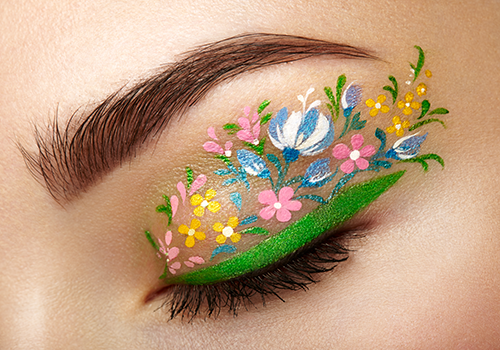Floral eyeliner

Who said florals are only meant for clothing or curtains? Makeup artistry has gone to another level with floral eyeliner. So if you have got a good eye and a steady hand, do give it a try. Makeup artists have showcased their versions of the fun floral liner, some using bright colours and some using pastels. The look involves painting tiny, intricate flowers on the upper lash line for a colourful spring-ready look. You can try simple minimal floral designs to an all-out winged field of flowers. The choice is yours! It is a trend which is easy to achieve, even for beauty beginners.